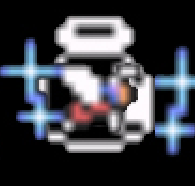I’ll preface this by saying that English is not my mother language and I’m sorry if this isn’t the right community, but I didn’t find a more appropriate one.
Last year I started to notice more and more people on YouTube for example using the verb “to put” without a preposition – like “Now I put the cheese” – which sounds very weird and kind of feels wrong to me. Is this really used in spoken English and is it grammatically correct?
It’s slangy, for sure. It’s said in a way where the rest of the sentence is not explicitly stated but implied. Like, "Now I put the cheese… " (On the burger), and then I put the bun. (Again, on the burger.) It’s not terribly uncommon, but it does happen.
No for most people because “put” would require two complements - the object and the place. (It’s a lot like a ditransitive verb, even not being one.) And in this case the place is missing, you’d expect it to be at most replaced with an adverb (e.g. “now I put the cheese there”).
You’d say “Now I put the cheese in” or “there” or something of the like
This points to an interesting feature that appears in English: phrasal verbs. This is where a verb is made up of a verb word used in combination with one or more prepositions or “particles”. For example in the phrase “put cheese on the pizza” the verb word “put” combines with the preposition “on”. (There is no particle in this example.) Even though the words “put” and “on” are not consecutive, and even though “on” has its own function as a preposition, “put on” together form a verb that is lexically distinct (has different meaning and rules) from “put” used with a different preposition or particle.
IIUC you even get a different meaning if you use the same words with a different function. With “on” as a preposition you get, “put cheese on the pizza”. But with the particle form of “on” you get a different verb with a different meaning: “put on a coat”.
The use you posted, “put cheese”, looks like a transitive form of “put” which would be distinct from both of the phrasal verbs I described. My guess is that this is dialect-specific: maybe some English speakers perceive transitive “put” as valid, while others only use “put” as part of a phrasal verb.
Language is messy, and there is no authoritative set of rules for English so you’ll find lots of cases where people disagree about correct grammar. One of the classics is whether “where” substitutes for a prepositional or a noun phrase. Lots of people feel it is correct to say, “Where is that at?” while others think that sounds wrong, like saying, “It’s at by the corner.” (I think this might be the basis for the made-up rule, “don’t end sentences with a preposition”.)
It’s colloquial and you’ll hear it when people talk about making food. Like if you’re making a sandwich. You put mayo on the bread, then you put the cheese, then you add meat and lettuce or whatever.
It’s kind of like “on” is implied and you don’t bother to say it. I just mentioned it, so I don’t need to say it again. That’s how it feels to me anyway.
I could see myself saying “First you put mayo, then you put cheese.” That would be like if someone was standing next to me, watching me make the sandwich. They can see exactly where I’m putting things. But normally you do want to specify where you’re putting something.
As a native English speaker it sounds strange to me. I have heard it used before by a fluent English speaker who was not a native speaker and it made sense, but caught me off guard at first.
It reminds me of how my French grandma would say “shut the lights” instead of “shut off the lights”, or “shut the lights off”. It makes enough sense to understand, but doesn’t feel quite right.
The phrase that immediately comes to mind is “poner la mesa.” It translates from Spanish as “to set the table” but literally means “to put the table.” Similarly, one might take photos with a camera, but the literal meaning of the Spanish phrase “sacar photos” is “to remove photos.”
Linguistically and colloquially (the latter lending more to your example of adding cheese to something), we often use weird verbs in specific contexts.
What you’ve described might not fall into the category of proper grammar, but it also doesn’t come across as strange or unexpected.
There are also unspoken rules about the ordering of adjectives to
blindly followfollow blindly.
Edit to add: Proper, verbose grammar is also not usually necessary or even useful in the context of directions/commands, particularly in lists of such. Sure, “add cheese” would probably make a technical writer happier, but the point still gets across.
The context is important as well:
“What toppings do you put on your burgers?”
“I put cheese.”
I have worked in a lot of kitchens where English was the standard language but different groups spoke Italian, Spanish, Portuguese, German, Swiss German, French, Arabic, Croatian, Tamil, etc. (not always the same time) and we just needed to work so the language was rudimentary and often literal translations.
“Put me three eggs” meaning “get me three eggs”.
“I make it” meaning “I’ll do it”.
And so on.
“Close the fire” would be “turn off the burner”.
I figured out at some point that “close” was like closing a switch. And that things like me, my, mine were not always easy for people. You’d hear “put me lettuce in fridge”.
I want to be very clear I am not making fun of anyone. I sounded exactly the same when I was saying stuff in non-English (e.g. the garde manger were all Spanish at one place so they used it and when I worked their section I’d try to use it).
Edit - we talked like this outside of work too when having a beer “baby 3 now, get cake in morning, grows fast!”. Good friends learn each others languages better but its mostly vocabulary and not grammar.
It is often heard from non-native speakers and will probably be understood, but in the absence of other context it will be perceived as slightly odd. Perhaps it’s on the way to being widely recognized as fully “correct” but I don’t think it’s there yet.
Plop the ham thusly, please
No, it’s definitely not grammatically correct.
“She wanted to put something in my butt.”
Seems grammatical to me unless I’m not understanding the question well enough.
@CmdrShepard I think OP is trying to talk about the word “put” without the “in” or “on” or “above” etc.
So it would just be “She put something”.
deleted by creator
I have heard this before, mostly from people with English as a second language. It sounds a little odd to my ear and probably isn’t technically correct, but like most things in English, if it makes sense in context you can let it slide.
In golf it can be used without preposition but also without object, and with completely unrelated meaning.
That’s “putt” you plonker 😂
deleted by creator
It’s widely used, so I wouldn’t draw some connotation from it.
Instructions can feature a fair amount of ellipsis: Put ham. Put cheese. Put bread.
Everybody knows it’s ellipsis, and they’ll be a little put out if you expect full sentences instead of rapid fire and terse instructions.
Sorry, but I don’t think this is right. You’d say “add ham” not “put ham.” “Put ham” doesn’t mean anything without the preposition. “Put ham in/on”
Add is just an operator. I’m not sure what the limits are to operators, but most English native speakers don’t overthink it. (Or, they get overly concerned with their specific operator - which is no standard at all).
If they started with put, then it makes sense for put to follow.









